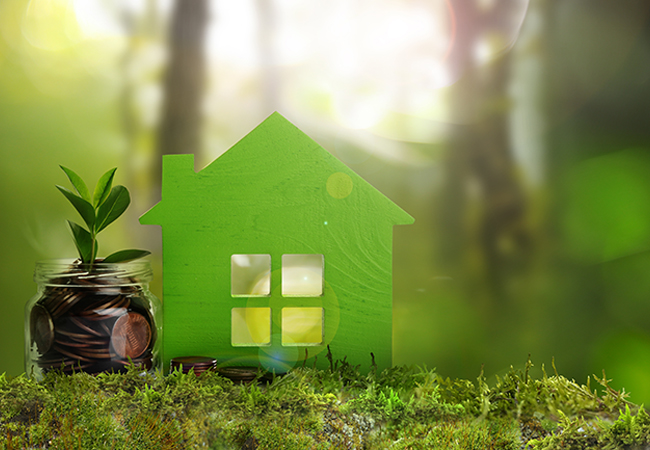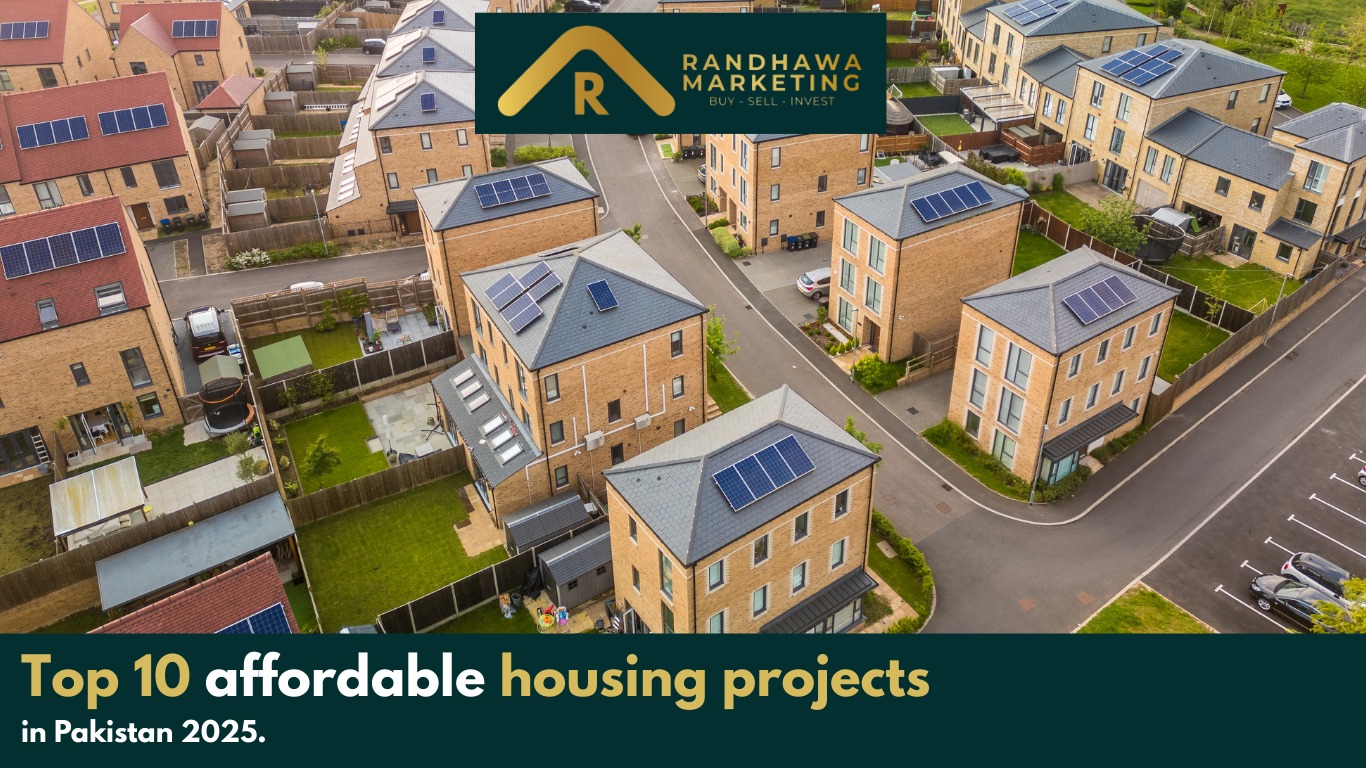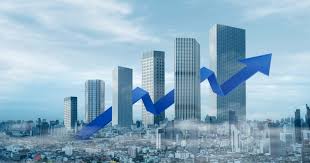Why Eco-Friendly Homes Are The Future Of Housing In Pakistan
Why Eco-Friendly Homes Are The Future of Housing in Pakistan
An eco-friendly house is a residential building planned, constructed, and operated in a way that reduces harm to the environment while enhancing the health, comfort, and cost-efficiency of its occupants. It achieves this by minimizing the use of non-renewable resources, maximizing energy and water efficiency, and incorporating sustainable building materials that have a low environmental impact.
Such a home is designed to work in harmony with its natural surroundings by using renewable energy sources (like solar power), climate-responsive architecture (to reduce heating and cooling needs), and systems that cut waste generation and pollution. It also prioritizes indoor environmental quality, ensuring that air, light, and materials contribute to the well-being of residents.
In short, an eco-friendly house is a sustainable living space that balances modern comfort with environmental responsibility, aiming to meet present needs without compromising the ability of future generations to meet theirs. Eco-friendly homes are the future of housing in Pakistan and connect it with the country’s real conditions, climate, and economic realities.
1. Rising Energy Costs in Pakistan
Electricity prices in Pakistan have soared over the past decade, driven by deep-rooted structural issues and global market fluctuations:
a. Dependence on Imported Fuels
Around one-third of the country’s electricity comes from imported LNG, coal, and furnace oil. When global prices spike—such as after the Russia–Ukraine conflict—or when the rupee weakens, import bills surge. This leads to Fuel Price Adjustments (FPA) on monthly bills, directly impacting consumers.
b. Circular Debt Crisis
Pakistan’s power sector is burdened with a circular debt exceeding PKR 2.3 trillion. Unpaid bills, delayed subsidies, and inefficiencies force the regulator, NEPRA, to raise tariffs, further straining household budgets.
c. Inefficient Energy Mix
Despite having abundant sunlight, solar and wind contribute less than 5% to total power generation, while expensive thermal plants dominate.
d. Transmission & Distribution Losses
With 17–20% of electricity lost due to outdated infrastructure and theft, costs are passed on to consumers—well above the global average loss rate.
e. Direct Impact on Families
Monthly power bills have doubled or tripled for many households. Air conditioning, water pumping, and heating costs make summers and winters particularly expensive for middle-income families.
2. Frequent Power Shortages
Even with high electricity prices, many areas still face unreliable supply:
a. Supply–Demand Gap
Summer demand can peak at 28,000 MW, while generation capacity lags behind, causing 4–12 hours of load-shedding in urban areas—and even longer in rural regions.
b. Seasonal Hydropower Variations
Hydropower, which provides 25–30% of the country’s electricity, drops significantly in winter when river flows are lower, forcing expensive fuel-based generation.
c. Fuel Supply Disruptions
Delayed LNG or coal shipments—due to payment constraints or market shortages—can trigger sudden plant shutdowns.
d. Weak Grid Infrastructure
Old transformers, wires, and substations often fail during storms, heavy rains, or heatwaves.
e. Everyday Impacts
Students face interrupted study schedules.
Small businesses lose productivity and revenue. Families spend heavily on UPS systems, batteries, and generators—plus the fuel and upkeep they require.
3. How Eco-Friendly Homes Solve These Problems
Eco-friendly housing offers practical solutions to Pakistan’s rising energy costs and unreliable electricity:
- Solar Power Integration
- Panels can meet 50–100% of a household’s daytime electricity needs, and net metering allows selling excess power back to the grid.
b. Energy-Efficient Appliances & Lighting
Inverter air conditioners, LED bulbs, and energy-rated refrigerators can cut power consumption by 30–50%.
c. Thermal Insulation & Climate-Responsive Design
Insulated roofs, reflective paint, and strategically placed windows reduce the need for artificial cooling and heating.
d. Smart Energy Management
Home automation systems can monitor and control lighting, appliances, and cooling to maximize efficiency and cut wastage.
2. Water Scarcity and Efficient Use in Pakistan
Pakistan ranks among the world’s most water-stressed countries, and experts from the Pakistan Council of Research in Water Resources (PCRWR) warn that the country could face absolute water scarcity in the near future if current consumption trends continue. This is not just an environmental concern—it’s a challenge that is already shaping daily life for millions.
Why Water Is Running Out
Population Growth & Rapid Urbanization: More people and expanding cities mean rising demand for drinking water, sanitation, and industry.
Inefficient Management: Outdated water systems, leakage, and wasteful irrigation methods lose millions of gallons daily.
Over-Extraction of Groundwater: Unregulated tube wells are draining underground reserves faster than nature can replenish them.
How It Affects Everyday Life
In Cities: Places like Karachi, Quetta, and Islamabad face regular shortages, forcing residents to buy expensive tanker water.
In Villages: Farmers struggle with poor harvests due to insufficient irrigation.
On Public Health: Limited clean water contributes to outbreaks of diseases such as cholera and typhoid.
Eco-Friendly Homes: A Smarter Approach to Water Use
Sustainable housing is built to save every drop, using design and technology to reduce waste and improve efficiency.
1. Rainwater Harvesting – Collects rain from rooftops for gardening, cleaning, or flushing toilets, reducing dependence on external supplies.
2. Greywater Recycling – Treats wastewater from showers, sinks, and washing machines so it can be reused, cutting household water demand by up to 40%.
3. Low-Flow Fixtures – Taps, showerheads, and dual-flush toilets save thousands of liters annually without lowering water pressure.
4. Leak Detection Systems – Smart meters and sensors catch hidden leaks early, preventing significant losses.
5. Water-Wise Landscaping – Using drought-tolerant plants, drip irrigation, and mulching to maintain greenery with minimal water.
The Long-Term Payoff
Lower Costs: Smaller water bills and less dependence on costly tanker deliveries.
Sustainability: Protects resources for future generations.
Resilience: Keeps homes functional during droughts or supply cuts.
While water scarcity is one of Pakistan’s most pressing challenges, eco-friendly housing offers practical solutions that save money, protect health, and ensure a more secure water future.
3. Climate Change & Urban Heat Mitigation
Climate Change & Urban Heat Mitigation in Pakistan
1. The Growing Challenge
a. Climate Change in Pakistan
Pakistan is now counted among the 10 most climate-vulnerable countries in the world, and the warning signs are everywhere. Summers are getting hotter, heatwaves last longer, and rainfall patterns are unpredictable. Heavy floods, long droughts, and early glacier melts are becoming routine headlines.
The melting of Himalayan glaciers is especially alarming—it threatens the country’s future water supply, putting millions at risk. These changes don’t just hurt the environment; they disrupt agriculture, harm public health, and strain infrastructure.
b. Urban Heat Island Effect (UHIE)
In major cities like Karachi, Lahore, and Islamabad, climate change is made worse by the Urban Heat Island Effect—a phenomenon where built-up areas trap more heat than rural surroundings.
What Causes It?
Asphalt roads and concrete buildings absorb heat during the day and release it slowly at night.
Lack of trees and green spaces means less natural cooling.
Vehicles, air conditioners, and factories add extra heat to the air.
The Result: City temperatures can be 2–7°C hotter than nearby rural areas, making summers unbearable, especially after sunset.
2. How It Impacts Daily Life
Rising Cooling Bills: Families rely more on air conditioning, pushing electricity costs higher.
Health Concerns: Increased cases of heatstroke, dehydration, and respiratory problems.
Water Shortages: More water is needed for cooling and irrigation, worsening supply issues.
Declining Comfort: Prolonged heat affects productivity, mood, and overall quality of life.
3. How Eco-Friendly Homes Help
Sustainable housing design can tackle both climate change and the urban heat problem head-on.
a. Green Roofs & Walls
Planting vegetation on rooftops and walls absorbs sunlight instead of trapping heat.
Can lower indoor temperatures by 4–5°C, improve air quality, and reduce rainwater runoff.
b. Reflective or Cool Roofs
Light-colored or reflective paint bounces back 60–90% of sunlight.
Can reduce roof surface temperatures by up to 15–20°C in summer.
c. Passive Ventilation & Smart Layout
Strategic window placement and open designs use natural airflow for cooling.
Reduces reliance on air conditioning.
d. Tree Planting & Landscaping
Shade trees lower surrounding temperatures by 2–3°C and protect walls and windows from direct sunlight.
e. Permeable, Light-Colored Pavements
Allow water to seep into the ground, reducing heat buildup and helping recharge groundwater.
4. The Long-Term Outlook
As heat waves grow more frequent, cities will face higher cooling costs, greater health risks, and reduced livability. By adopting eco-friendly housing and urban heat mitigation strategies, Pakistan can:
Lower energy use.
Protect health during extreme weather.
Increase property value by making homes more comfortable and resilient.
4. Government Policies & Market Trends
1. Government Policies
Pakistan’s housing market is largely shaped by state-led efforts to tackle the housing shortage, attract investment, and guide urban growth toward more sustainable models.
a. Affordable Housing Initiatives
Naya Pakistan Housing Program (NPHP): A flagship plan to deliver 5 million affordable homes for low- and middle-income families. The program is backed by subsidized financing, making homeownership more attainable.
Apni Chat Apna Ghar Scheme: A loan facility with low interest rates designed to help first-time buyers secure their own homes.
b. Regulatory Framework
The creation of Real Estate Regulatory Authorities (RERAs) in select provinces ensures buyer protection, enforces transparency, and regulates developer activities.
Land-use regulations and zoning laws promote organized urban expansion instead of unplanned, haphazard growth.
c. Incentives for Developers
Tax breaks and amnesty schemes encourage builders to operate in the formal sector.
Reduced import duties on construction materials like cement and steel help lower development costs.
d. Push for Sustainability
Updated building codes and green certification programs encourage the adoption of eco-friendly and energy-efficient construction practices.
2. Market Trends
a. Rapid Urbanization
With the urban population growing at over 3% annually, demand for housing in cities such as Karachi, Lahore, and Islamabad continues to surge.
b. Popularity of Gated Communities
Buyers are increasingly drawn to secure, master-planned communities offering integrated amenities—schools, hospitals, shopping areas—that create a convenient, self-contained lifestyle.
c. Rising Land and Construction Costs
Inflation and a weaker currency have driven up the prices of land and building materials, making property more expensive across the board.
d. Growing Demand for Affordable & Mid-Range Homes
Middle-income buyers are steering the market toward smaller plots and budget-friendly apartments rather than sprawling luxury residences.
e. Digital Transformation in Real Estate
Proptech platforms are making buying, selling, and renting properties more efficient and transparent through online listings, virtual tours, and digital transactions.
f. Investment from Overseas Pakistanis
Government incentives and streamlined remittance systems have fueled strong investment from Pakistanis living abroad, injecting much-needed capital into the property sector.
5. Healthier Indoor Environments
A healthier indoor environment means designing and maintaining living spaces in a way that supports physical health, mental well-being, and overall comfort for the occupants. It’s about reducing pollutants, improving air quality, managing natural light, and using safe, non-toxic materials so people can breathe easier, sleep better, and live in a stress-free atmosphere.
1. Key Elements of a Healthier Indoor Environment
a. Indoor Air Quality (IAQ)
Why it matters: Poor air quality can cause allergies, respiratory problems, headaches, and fatigue.
How to improve:
Adequate ventilation (cross-ventilation, exhaust fans, and windows).
Use of air purifiers in polluted areas.
Limiting indoor smoking and using low-emission appliances.
b. Natural Lighting
Exposure to daylight helps regulate sleep cycles, boosts mood, and reduces eye strain.
Design strategies include large windows, skylights, and light-colored walls to reflect sunlight deeper into the home.
c. Non-Toxic Materials
Building and furnishing materials should be low-VOC (Volatile Organic Compounds) to avoid harmful chemical emissions.
Use of eco-friendly paints, natural wood, bamboo flooring, and organic fabrics.
d. Temperature & Humidity Control
Comfortable indoor climate reduces the risk of mold growth and respiratory illness.
Proper insulation, energy-efficient HVAC systems, and humidity control (40–60%) help maintain balance.
e. Acoustic Comfort
Excessive noise causes stress and impacts sleep.
Soundproofing walls, double-glazed windows, and acoustic panels help reduce unwanted noise.
2.Benifits of a Healthier Indoor Environment
Physical Health: Reduces respiratory problems, skin irritations, and fatigue.
Mental Well-being: Enhances mood, reduces stress, and improves concentration.
Productivity: Cleaner, well-lit, and well-ventilated spaces support focus and creativity.
Long-Term Safety: Minimizes exposure to harmful chemicals and allergens.
6. Higher Property Value & Market Demand
A property’s value is determined by its location, features, demand, and future growth potential. Homes with sustainable designs, modern amenities, and quality infrastructure often appreciate faster because they offer long-term benefits to buyers.
Why values increase:
Better infrastructure: Roads, utilities, and public facilities nearby raise property worth.
Eco-friendly features: Energy-efficient systems, solar panels, and green designs attract premium pricing.
Security & amenities: Gated communities, parks, schools, and healthcare access make properties more desirable.
Urban expansion: As cities grow, areas once considered “far” become prime real estate, boosting prices.
Market Demand
Market demand refers to the number of buyers actively interested in purchasing property in a certain location or segment. Strong demand usually pushes prices up, while weak demand can lead to stagnation.
Factors driving demand:
Population growth & urbanization: More people moving to cities means more housing needed.
Investment potential: Investors look for high-return areas, increasing buyer competition.
Government incentives: Tax breaks, easy loans, and infrastructure projects make certain areas more attractive.
Lifestyle trends: Shift toward secure, planned, and eco-conscious communities.
7. Moral & Social Responsibility
These are ethical duties that developers, homeowners, and governments have to ensure housing is built and managed in a way that respects human dignity and environmental integrity.
Honesty and Transparency: Avoid false advertising, hidden charges, or misleading project timelines.
Quality and Safety: Construct homes that meet safety standards to protect residents’ lives.
Environmental Care: Minimize harm to nature by using sustainable building materials and reducing waste.
Fair Dealings: Ensure contracts, sales, and property rights are handled justly for all parties involved.
Social Responsibilities
These relate to the role of housing in supporting community well-being and contributing to society at large.
Affordable Housing Access: Provide options for low- and middle-income families, not just luxury developments.
Community Development: Include public spaces, parks, schools, and healthcare facilities in housing projects.
Cultural Sensitivity: Design homes and neighborhoods that respect local traditions and values.
Inclusivity: Ensure facilities are accessible for people with disabilities and safe for women, children, and the elderly.
Job Creation: Use housing projects as opportunities to generate employment for local workers.
Why These Responsibilities Matter
They build trust between developers, buyers, and the community.
They reduce social inequality by providing housing opportunities to different income groups.
They protect the environment for future generations.
They strengthen communities by fostering safety, unity, and mutual respect.
Pakistan’s housing landscape is at a pivotal point, shaped by rapid urbanization, shifting buyer preferences, and urgent environmental challenges. Government-led initiatives—such as affordable housing schemes, regulatory reforms, and incentives for sustainable construction—are paving the way for a more inclusive and forward-thinking real estate market. These policies align closely with global sustainability trends, encouraging the adoption of energy-efficient designs, water conservation technologies, and eco-friendly building materials.
The benefits of such developments are multi-layered. Eco-friendly homes directly tackle the country’s most pressing issues, including escalating energy costs, water scarcity, frequent power outages, and the urban heat island effect. They create healthier indoor environments by improving air quality, ensuring better natural light, using non-toxic materials, and maintaining comfortable temperature and humidity levels—enhancing both physical health and mental well-being.
From an economic perspective, sustainable and well-planned housing significantly boosts property values and market demand. Buyers and investors are increasingly drawn to communities that combine modern amenities, security, and green spaces with long-term cost savings through reduced utility bills. As demand grows, these projects become high-value assets, offering strong returns on investment while fostering stable, thriving neighborhoods.
However, the future of Pakistan’s housing sector is not only a matter of profit or urban expansion—it’s a moral and social responsibility. Developers and policymakers must prioritize affordability, accessibility, and community welfare alongside profitability. This includes ensuring fair housing access for low- and middle-income families, integrating public services into residential planning, and protecting the environment for future generations.
In essence, the path forward lies in a balanced approach—where housing is designed not just for today’s needs but for tomorrow’s realities. By uniting government vision, market innovation, and ethical responsibility, Pakistan can create urban environments that are economically viable, environmentally sustainable, and socially equitable, setting a strong foundation for the decades ahead.


